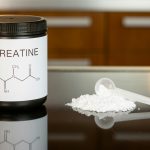
Per the first article of this series, the emergence of glucagon-like peptide-1 receptor agonists (GLP-1 RAs) has transformed clinical care for individuals with obesity and type 2 diabetes, offering remarkable efficacy for appetite regulation, glycemic control, and weight loss. However, the cultural and clinical emphasis on weight reduction as a proxy for health—a hallmark of weight-centric thinking—requires critical reexamination in light of muscle-centric health paradigms like Lyon’s (2023) Muscle-Centric Medicine schema. As a paradigm, muscle-centric medicine reframes skeletal muscle not only as a structural and locomotor system but as a key regulator of metabolic health, hormonal balance, and longevity (Anderson et al., 2015; Simoneau et al., 1999).
Consequently, this article argues for a decisive pivot away from purely scale-focused outcomes toward preserving—and ideally enhancing—skeletal muscle mass and function in individuals undergoing GLP-1 therapy. For personal trainers, healthcare providers, and exercise professionals, understanding this paradigm shift is essential to guiding clients through sustainable, long-term health improvements while mitigating the potential risks of unintentional muscle loss that accompanies the use of these powerful pharmaceutical interventions.
The Problem with Weight-Centric Culture
Weight-centric culture has traditionally valued body mass index (BMI) or pounds lost as the main indicators of health. Whether arising from the “low-fat” craze of the 90s or more recent popular diets like the ketogenic diet that claim to guarantee weight loss, these approaches remain rooted in a reductionist model. Although convenient, this perspective overlooks the complexity of body composition and the crucial role of lean mass. Consequently, research from Evans and Cummings (2024) underscores the potential dangers of this mindset, highlighting how rapid or excessive weight loss, especially without resistance training, can result in disproportionate losses in lean body mass (LBM). For instance, GLP-1 RAs such as semaglutide and tirzepatide, while effective for reducing adiposity, have also been associated with reductions in muscle mass, particularly when not paired with structured exercise interventions (Jiao et al., 2024; Sargeant et al., 2019).
In this context, a new narrative is necessary—one that centers around strength, skeletal muscle quality, metabolic resilience, and hormonal optimization. To this end, weight loss is not inherently beneficial if it compromises the very tissue responsible for metabolic regulation, immune support, and movement integrity.
Skeletal Muscle as a Metabolic Powerhouse
Skeletal muscle is the primary site of insulin-stimulated glucose disposal, accounting for approximately 80% of uptake under normoglycemic conditions (Anderson et al., 2015). In individuals with obesity or insulin resistance, compromised muscle mass or mitochondrial dysfunction can exacerbate metabolic dysfunction. Fortunately, skeletal muscle is also highly plastic. Through resistance training and mechanical loading, it adapts via hypertrophy, enhanced glucose transporter expression, and improved insulin sensitivity (Wang et al., 2021).
Importantly, the GLP-1 pathway intersects with muscle physiology. Research suggests GLP-1 RAs may improve insulin sensitivity indirectly through improved gut-brain-muscle signaling and direct effects on myocytes (Chai et al., 2014). Moreover, muscle-derived myokines such as IL-6 and irisin modulate systemic inflammation, glucose metabolism, and even cognitive performance (Xu et al., 2021). This endocrine function of muscle further affirms its centrality in whole-body health.
Muscle Preservation in GLP-1 Users: What the Research Says
While GLP-1s do not directly target skeletal muscle, emerging evidence suggests their downstream effects may influence muscle mass depending on exercise status and metabolic health. For example:
- Osaka et al. (2023) observed that GLP-1/basal insulin co-therapy in older adults led to favorable skeletal muscle outcomes, potentially due to improved glycemic control and anabolic signaling.
- Old et al. (2025) reported mixed findings on the mitochondrial effects of GLP-1s in muscle tissue, highlighting the need for adjunct lifestyle interventions to support muscular integrity.
- Khin et al. (2021) found that dulaglutide improved muscle function in aged mice by reducing inflammation and enhancing mitochondrial dynamics.
- Conversely, Sonavane et al. (2025) documented cases of rhabdomyolysis with GLP-1 use, underscoring the need for careful monitoring and strength training to maintain muscle robustness.
Taken together, these findings suggest that GLP-1 therapy’s impact on muscle health is not inherently detrimental but is highly modifiable through behavioral strategies, especially resistance training.
Shifting Metrics: From Weight Loss to Muscle Retention
In the era of GLP-1 RAs, the conversation must shift toward muscle-preserving, function-enhancing interventions. Trainers and allied health professionals must advocate for metrics that matter—grip strength, appendicular lean mass, neuromuscular coordination, and metabolic efficiency—rather than simply pounds lost.
Clinical studies demonstrate that skeletal muscle mass is a strong predictor of mortality, mobility, and metabolic flexibility (Cawthon et al., 2020; Beaudart et al., 2014). This is particularly relevant in older adults and those with chronic disease, where sarcopenia increases vulnerability to falls, hospitalizations, and frailty.
Moreover, Meng et al. (2014) identified links between skeletal muscle inflammation and impaired glucose homeostasis, suggesting that muscle preservation is not only a musculoskeletal concern but a systemic health imperative. A muscle-centric intervention model offers a more holistic lens, aligning with precision medicine goals and population-specific programming.
Practical Applications for Trainers: What to Emphasize
1. Integrate Resistance Training Early and Often
Resistance training should be foundational—not supplemental—for GLP-1 users. Programs should emphasize progressive overload, periodization, and neuromuscular variability to optimize hypertrophy and function (Zhao et al., 2022; Grønfeldt et al., 2020).
2. Prioritize Protein Timing and Quality
Clients undergoing GLP-1 therapy may experience appetite suppression, making it critical to emphasize protein-dense meals to support muscle protein synthesis (Bloom et al., 2018). Resistance exercise combined with protein intake is the most effective way to maintain LBM during weight loss.
3. Track Functional Strength Over Scale Weight
Handgrip dynamometry, chair stands, and isokinetic testing offer more meaningful insights than weight or BMI alone (Bohman et al., 2018; Lima et al., 2019). These measures correlate with daily function and long-term health outcomes.
4. Monitor Recovery and Inflammation
Trainers should remain aware of signs of overtraining or muscle breakdown, particularly as clients may be in a caloric deficit. Supporting recovery through sleep hygiene, mobility work, and nutrient timing is essential.
The Endocrine Role of Muscle: A Case for Cultural Reframing
Weight-centric culture often ignores the hormonal implications of muscle health. Yet skeletal muscle secretes numerous myokines—such as IL-6, irisin, and fibroblast growth factor 6 (FGF6)—that influence systemic inflammation, energy expenditure, and insulin sensitivity (Xu et al., 2021; Magnoni et al., 2014). Resistance training not only enhances muscle size and strength but also modulates these hormonal outputs in ways GLP-1s cannot achieve alone.
Furthermore, exercise-induced GLP-1 secretion—observed in several studies (Kullman et al., 2016; Hamasaki, 2018)—suggests a synergistic interaction between training and pharmacotherapy. The message is clear: Pharmaceutical interventions may initiate health improvements, but sustained metabolic and hormonal optimization depends on movement, muscle, and metabolism.
Moving Beyond the Scale
GLP-1s offer a powerful tool for improving metabolic health and catalyzing lifestyle change. But without a corresponding shift in how we define and measure success, these tools risk perpetuating the same reductionist thinking that has long dominated public health. Personal trainers are uniquely positioned to lead this evolution, championing strength over shrinkage, performance over pant size, and resilience over restriction.
As we move forward, integrating muscle-centric health approaches like muscle-centric medicine into the discussion about GLP-1 therapy is not only scientifically valid but also morally essential. It highlights the complexity of human health, the importance of movement, and the reality that bodies are designed for more than just weight loss.
References
Anderson, C., Hu, J., Barnes, R., Heidt, A., Cornelissen, I., & Black, B. (2015). Myocyte enhancer factor 2C function in skeletal muscle is required for normal growth and glucose metabolism in mice. Skeletal Muscle, 5(1). https://doi.org/10.1186/s13395-015-0031-0
Beaudart, C., Rizzoli, R., Bruyère, O., Reginster, J., & Biver, E. (2014). Sarcopenia: burden and challenges for public health. Archives of Public Health, 72(1). https://doi.org/10.1186/2049-3258-72-45
Bloom, I., Shand, C., Cooper, C., Robinson, S., & Baird, J. (2018). Diet quality and sarcopenia in older adults: a systematic review. Nutrients, 10(3), 308. https://doi.org/10.3390/nu10030308
Bohman, T., Tegern, M., Halvarsson, A., Broman, L., & Larsson, H. (2018). Reliability and agreement of the isokai isokinetic lift test. PLOS One, 13(12), e0209419. https://doi.org/10.1371/journal.pone.0209419
Cawthon, P. M., et al. (2020). Muscle mass assessed by the D3-creatine dilution method and incident disability in older men. The Journals of Gerontology Series A, 76(1), 123–130. https://doi.org/10.1093/gerona/glaa111
Chai, W., Zhang, X., Barrett, E. J., & Liu, Z. (2014). GLP-1 recruits muscle microvasculature and improves insulin’s metabolic action. Diabetes, 63(8), 2788–2799. https://doi.org/10.2337/db13-1597
Evans, W., & Cummings, S. (2024). Weight loss–induced muscle mass loss. JAMA, 332(16), 1394. https://doi.org/10.1001/jama.2024.17212
Hamasaki, H. (2018). Exercise and GLP-1: Does exercise potentiate treatment? World Journal of Diabetes, 9(8), 138–140. https://doi.org/10.4239/wjd.v9.i8.138
Jiao, R., et al. (2024). Characterizing body composition modifying effects of GLP-1 receptor–based agonists. Diabetes, Obesity and Metabolism, 27(1), 259–267. https://doi.org/10.1111/dom.16012
Khin, P., et al. (2021). Dulaglutide improves muscle function in aged mice. Aging, 13(18), 21962–21974. https://doi.org/10.18632/aging.203546
Kullman, E., et al. (2016). Exercise improves gut peptide regulation. Journal of Applied Physiology, 120(10), 1159–1164. https://doi.org/10.1152/japplphysiol.00693.2015
Lyon, G. (2023). Forever strong: A new, science-based strategy for aging well. Simon & Schuster.
Magnoni, L., Palstra, A., & Planas, J. (2014). AMPK induction in trout skeletal muscle. Journal of Experimental Biology. https://doi.org/10.1242/jeb.099192
Meng, Z., et al. (2014). The Baf60c/Deptor pathway links muscle inflammation to glucose homeostasis. Diabetes, 63(5), 1533–1545. https://doi.org/10.2337/db13-1061
Old, V., et al. (2025). GLP-1 receptor agonists and mitochondrial function. Journal of Cachexia, Sarcopenia and Muscle, 16(1). https://doi.org/10.1002/jcsm.13677
Osaka, T., et al. (2023). Favorable skeletal muscle mass changes in older patients. Clinical Medicine Insights: Endocrinology and Diabetes, 16. https://doi.org/10.1177/11795514231161885
Sargeant, J., et al. (2019). Effects of GLP-1 receptor agonists on lean body mass. Endocrinology and Metabolism, 34(3), 247–257. https://doi.org/10.3803/enm.2019.34.3.247
Simoneau, J. A., et al. (1999). Skeletal muscle lipid utilization and obesity. FASEB Journal, 13(14), 2051–2060. https://doi.org/10.1096/fasebj.13.14.2051
Sonavane, K., et al. (2025). Rhabdomyolysis and tirzepatide: A case report. European Journal of Case Reports in Internal Medicine. https://doi.org/10.12890/2025_005392
Wang, J., et al. (2021). Transcriptome and proteomic analysis of skeletal muscle after weight loss. Research Square. https://doi.org/10.21203/rs.3.rs-868357/v1
Xu, B., et al. (2021). Skeletal muscle-targeted delivery of FGF6 protects against obesity. JCI Insight, 6(19). https://doi.org/10.1172/jci.insight.149969
Zhao, H., et al. (2022). Resistance training and sarcopenia rehabilitation: Meta-analysis. International Journal of Environmental Research and Public Health, 19(23), 15491. https://doi.org/10.3390/ijerph192315491






